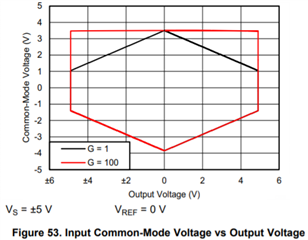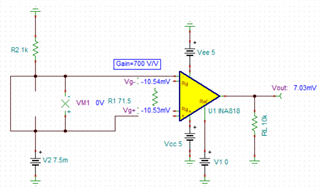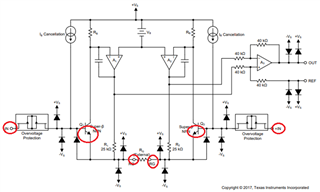Other Parts Discussed in Thread: INA828,
I've downloaded the Common-Mode Input Range Calculator for Instrumentation Amplifiers but it does not include INA818. Is there any model that would be identical in this tool to represent the INA818? I see the INA828 available for example. In my design I use a +5/-5V supply, Gain=700, and a VREF=-2.9V. I am trying to verify the maximum input amplitude and common mode range. My test board shows unexpected issues with a VDIFF=5mV and VCM=7.5mV. Much thanks. Falk






